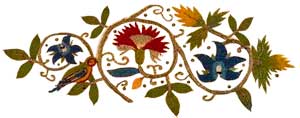 The fashionable Englishman is “the ape of all nation’s superfluities, the continual Masquer of outlandish habiliments.” Thomas Nashe, Summer’s Last Will and Testament, quoted by Jane Ashelford, Dress in the Age of Elizabeth I, 1988
The fashionable Englishman is “the ape of all nation’s superfluities, the continual Masquer of outlandish habiliments.” Thomas Nashe, Summer’s Last Will and Testament, quoted by Jane Ashelford, Dress in the Age of Elizabeth I, 1988
Elizabethan loved costumes. Often it’s difficult to distinguish whether a portrait-sitter wears his or her best clothing or a costume. Richard Sackville, Earl of Dorset, above, illustrates Nashe’s statment: there’s no indication that this rosette-shod elegance is a costume. It’s what the Earl wore to dinner–presumably at Court.
Nashe’s ‘masquers’ are performers in masques, a favorite courtly entertainment from the courts of Henry VIII through Elizabeth I to James I. Masques, the one occasion where ladies could appear onstage, were private entertainments emphasizing exotic costumes, dancing and music.
Though men took part in masques, they sported their full glory in the tiltyard. Noble jousters wore armor, so when helmet, armor, and gloves appear in a portrait, the sitter is set for the tilt. It’s safe to say that in the more bizarre portraits, the sitter wears a costume.
 Here Captain Thomas Lee is wearing the fancy-dress version of an Irish soldier’s kit: note the helmet under his arm. Lee had served in Ireland and seen first-hand the soldiers’ habit if tucking up their shirts and going bare-legged as they made their way through the bogs. The costly embroidery and lace collar would be unknown in the Irish infantry, of course. A viewer of this portrait in the Tate Gallery who doesn’t realize Lee wears a costume would regard his appearance as just plain weird. Bare feet???
Here Captain Thomas Lee is wearing the fancy-dress version of an Irish soldier’s kit: note the helmet under his arm. Lee had served in Ireland and seen first-hand the soldiers’ habit if tucking up their shirts and going bare-legged as they made their way through the bogs. The costly embroidery and lace collar would be unknown in the Irish infantry, of course. A viewer of this portrait in the Tate Gallery who doesn’t realize Lee wears a costume would regard his appearance as just plain weird. Bare feet???
Women wearing costumes for portraits can be recognized by the materials used. According to Jane Ashelford, “Costumes made of ‘tynsell’ were especially effective [onstage, in candlelight] as it was a silk material interwoven with gold or silver threads to give a glittering surface, and was cheaper than cloth of gold. The trimmings, gold tassels, gilt bells, silver and gold lace, and a wide variety of fringing, gave the costumes a sparkle and highly ornamented surface.” (188)
 To the right is a portrait of the notorious Elizabethan beauty Mary Fitton, dressed for a masque, according to Ashelford, as indicated by her beaded headdress and the wired spangles down the arm and hanging sleeves. Here Mary is memorialized during her celebrated days at court before she was disgraced for becoming pregnant by William Herbert, who did not marry her.
To the right is a portrait of the notorious Elizabethan beauty Mary Fitton, dressed for a masque, according to Ashelford, as indicated by her beaded headdress and the wired spangles down the arm and hanging sleeves. Here Mary is memorialized during her celebrated days at court before she was disgraced for becoming pregnant by William Herbert, who did not marry her.
As with male portraits of the era, it’s not always easy for us to discern whether female sitters wear their best clothing or a costume. Even Queen Elizabeth was painted in a masque costume. The Rainbow portrait, below, which hangs at Hatton Hall, depicts the queen as Astraea, the Queen of Beauty and springtime. According to Ashelford, her headdress is copied from an image in Broissard’s book of masque costumes, which she prized.
 The queen’s loose hair, mantel over her shoulder, and skirt designed without a farthingale or corset, also indicate masque wear.
The queen’s loose hair, mantel over her shoulder, and skirt designed without a farthingale or corset, also indicate masque wear.
Masques, performed at court and in noble manor houses at night, displayed wealth, the elaborate sets and fantastic costumes used just once. Noble women performing in these spectacles wore gorgeous clothes but had no speaking roles, comprising a glittering complement to the actors and singers. Costumes for masques had to be fanciful and notably different from ordinary finery. This image of an unknown lady is indisputably a costume: note the headdress and lack of structure to the gown itself.
These theatrical extravaganzas began under King Henry VIII and reached their apogee under King James I, successor in 1603 to Queen Elizabeth. In King James’ time, his wife Queen Ann and her ladies took the stage; the words often written by Ben Jonson and stage sets designed by the famous Inigo Jones. Portraits of the performers an provide a fuller recreation of these splendid events than the few surviving scripts since, as Jonson himself complained, words were less important than visual effects.
